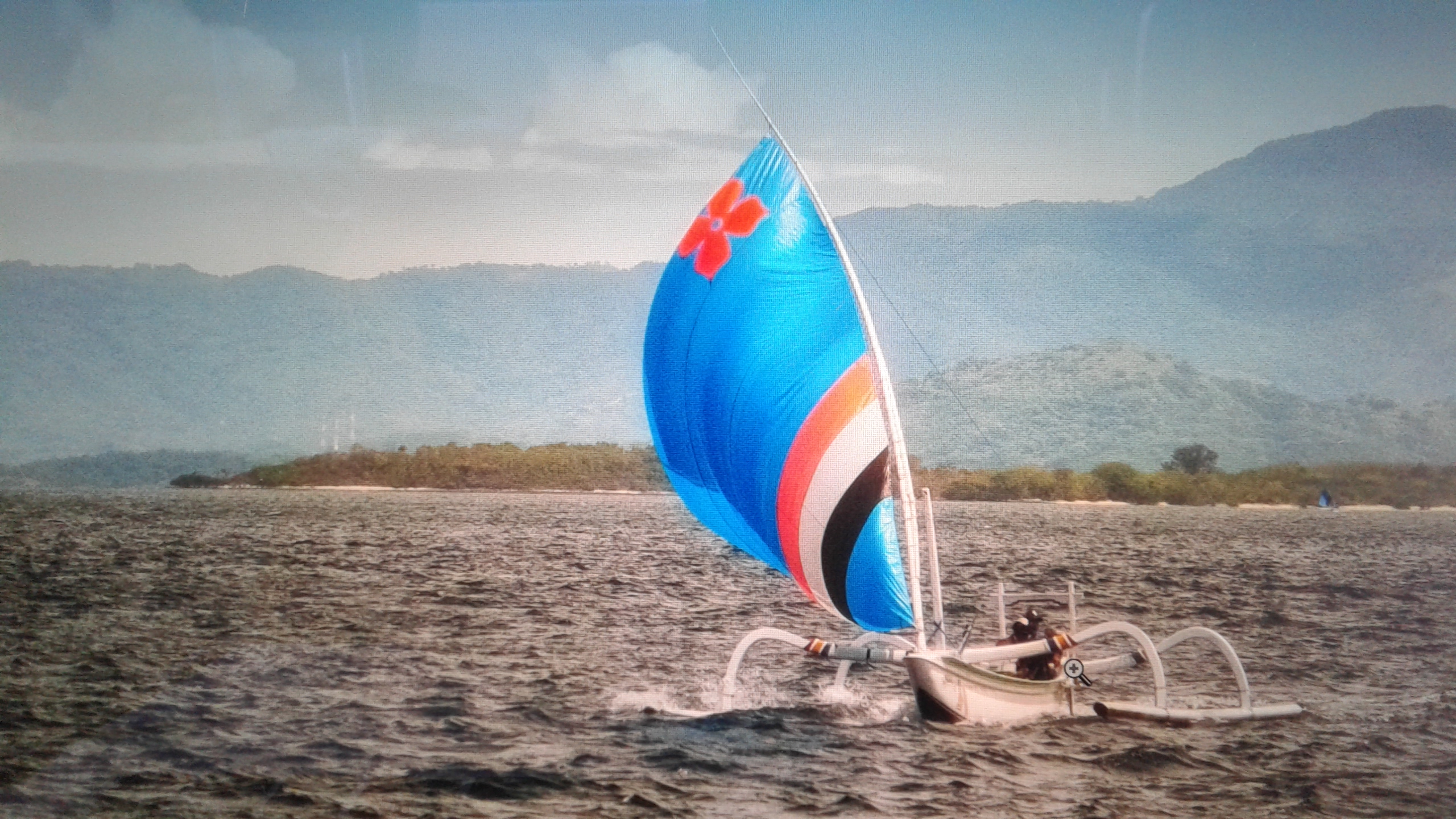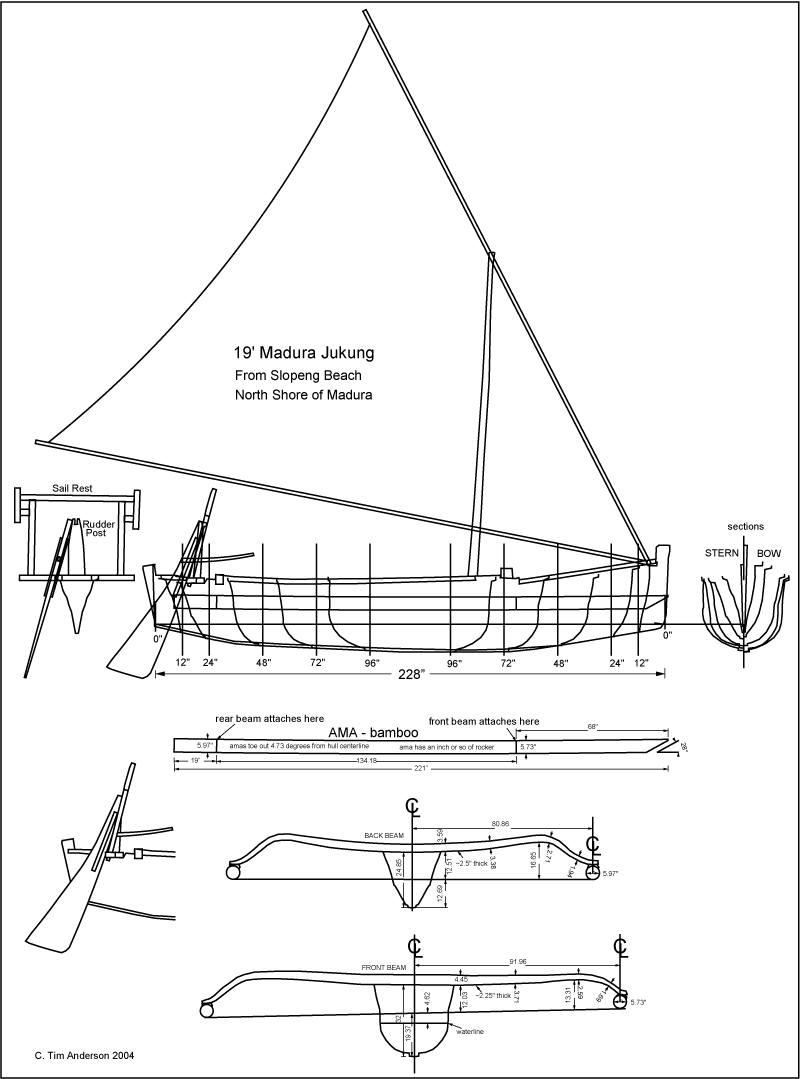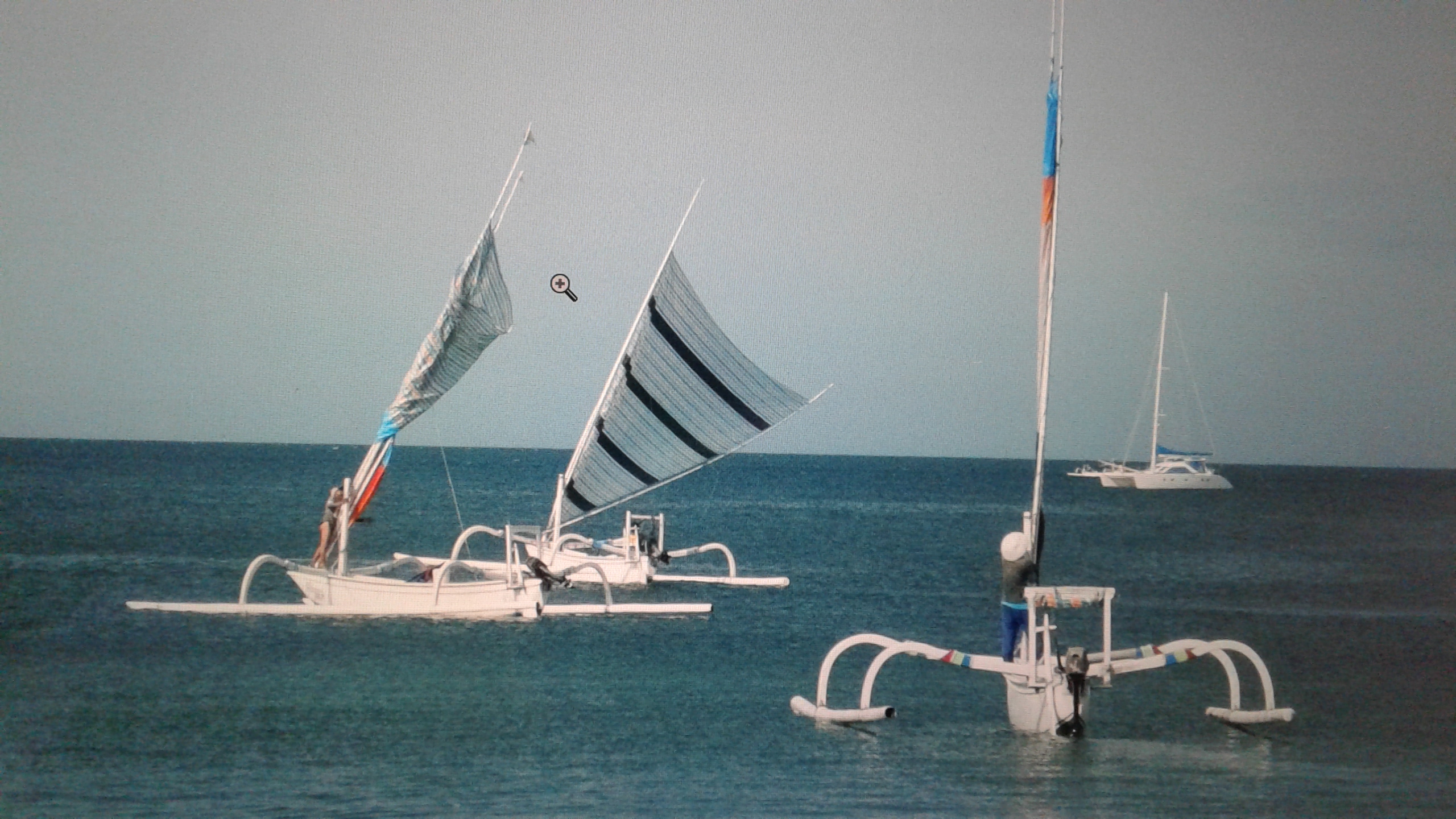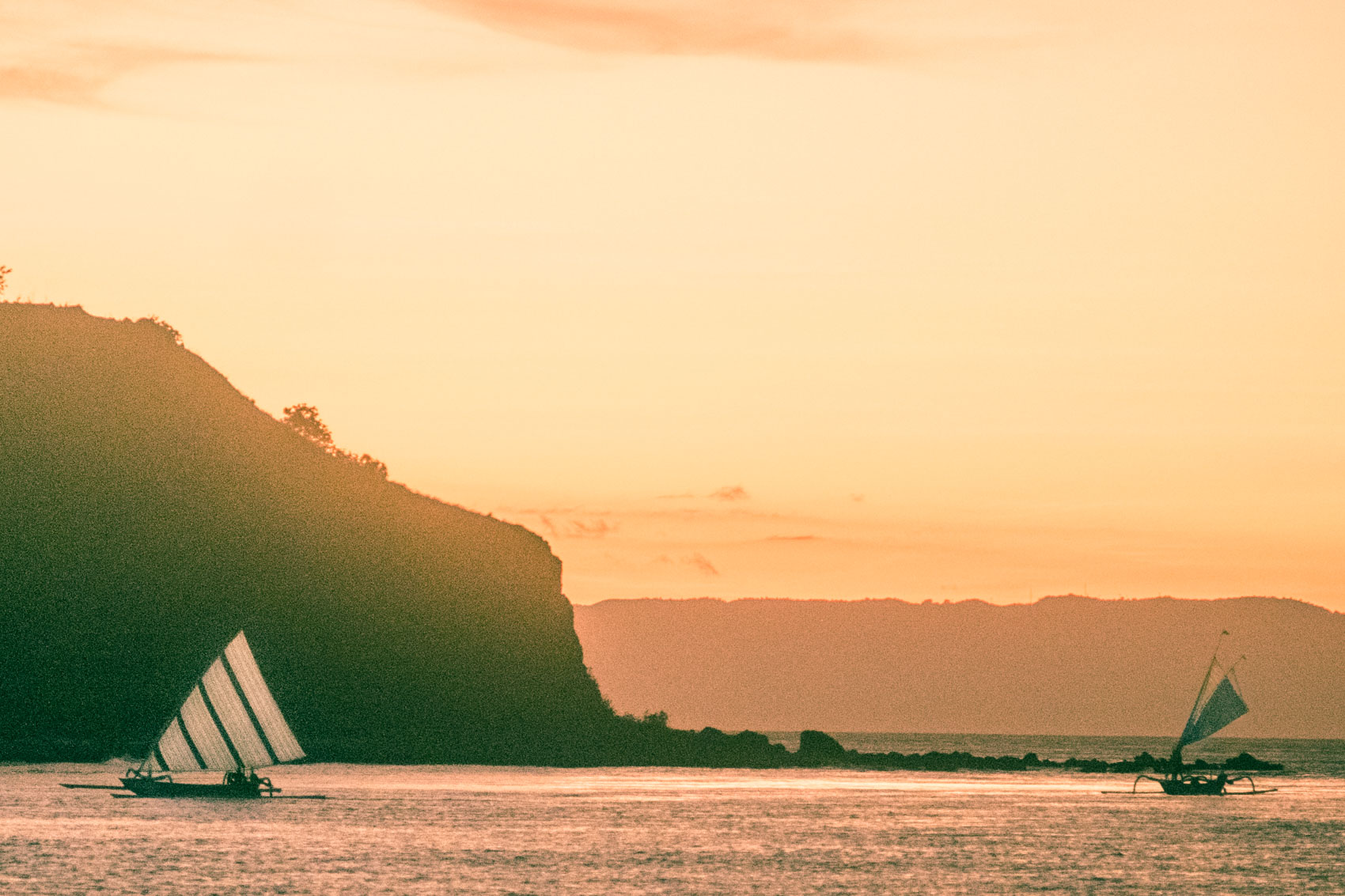[vc_row css=”.vc_custom_1528529962164{margin-top: 100px !important;}”][vc_column][vc_column_text]We are now close to Lombok and the currents here are extremely strong. When we go, together with Han en Maja, back to Bali we experience 8 knots of current. Even with faster sailing boats this becomes a bit of a problem. The current is strong and sometimes suddenly changing direction. There are whirlpools. When we sail trough them Yemaya is shaking.

Smart indonesian sailor with a very smart sailing boat
We are happily surprised to see fisherman in this strait use sailing boats. They use small, but extremely fast sailing boats to beat the insane Lombok strait currents. The maximum speed a monohull can reach mostly depends on the length of the hull in the water. Therefore it’s impossible to reach, with a little monohull sailboat, the speeds neccesary to beat the currents of the Lombok strait. But the Indonesian people are very smart. They use a canoe so small that it doesn’t comply with the fysica rule of the waterline length. Where a monohull needs a width of 1/3 of the length to become a stable and safe boat, the indonesiërs just used two outriggers to stabilize their small canoe. And created the multihull. The multihull generates stability as a result of the distance between its hulls rather than due to the shape of one hull. As such, the multihull is hydrodynamically more efficient than the monohull. These Indonesian sailing wonders can be quite fast, yet are also capable of being paddled and sailed in rougher water. They used this smart design allready for many centuries. When Magellan’s ships first encountered the Chamorros of the Mariana Islands in 1521, Antonio Pigafetta recorded that the Chamorros’ sailboats far surpassed Magellan’s in speed and maneuverability.
Only since the last 50 years the European people start to finally understand the possibilities of these multihulls. At this moment all sailing speed records are done with multihulls. More and more cruising sailors are choosing now of doing their “epic around the world sailing travels” with a multihull. The Asian people now this allready for more than 1000 years. They populated the Pacific Ocean with this kind of boats.

Blueprint of a Jukung Indonesian sailing boat
The Indonesian edition of the fishermans multihull is called Jukung. They use the crab claw sail traditional throughout Polynesia. Whilst this sail presents some difficulties in tacking into the wind, actually requiring to jibe around, a jukung is superb in its reaching ability and jibe-safe running. And one key benefit of the triangulated rig, with its flexible, tapering bamboo spars, is that the fisherman can “flog” or de-power the sail easily once they get through a patch of fish, thus slowing the vessel to just a few knots. Time to haul in the long line — about 500m long, with many hundreds of small hooks.

Indonesian fisherman are going to fish In the Lombok strait.
A day (or mostly night) of sailing to catch fish starts with an offering to the goddess of the ocean to ensure a prosperous and safe fishing trip. Also there will be a “canang ” or offering with perfumed incense on the boat before the sailing boats is pushed from the beach into the sea. And then they go straight into the fierce current of the Lombok Strait. Mount Agung, set over the ocean, offers just that perfect blend of magnificence and serenity, with its majestic existence in the backdrop of colourful dotted sail boats.

Fishers sailIng boats are coming home from a catch.
[/vc_column_text][/vc_column][/vc_row][vc_row][vc_column width=”2/3″][vc_basic_grid post_type=”post” max_items=”4″ element_width=”3″ grid_id=”vc_gid:1528529951475-9b3f74af-b227-5″][/vc_column][vc_column width=”1/3″][vc_raw_html]V291bGQlMjB5b3UlMjBsaWtlJTIwdG8lMjBzZWUlMjBtb3JlJTIwb2YlMjB0aGlzJTNGJTIwWW91JTIwY2FuJTIwc3Vic2NyaWJlJTIwdG8lMjBvdXIlMjAlMjBuZXdzbGV0dGVyLiUwQSU1Qnd5c2lqYV9mb3JtJTIwaWQlM0QlMjIyJTIyJTVE[/vc_raw_html][/vc_column][/vc_row]
